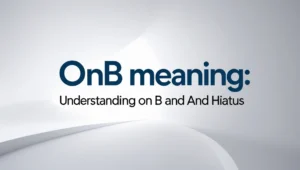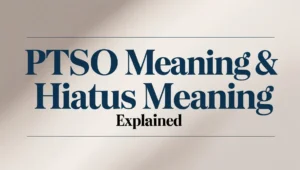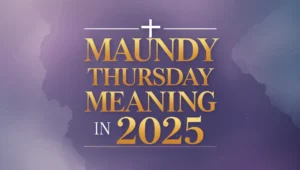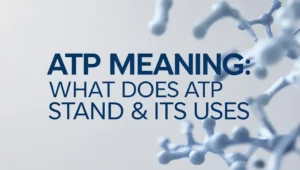Life is full of colors, and each one carries a deep emotional and symbolic value. Among these, the purple ribbon meaning stands out as one of the most profound and versatile symbols. Whether it’s worn on a lapel, tied around a tree, or shared on social media, a purple ribbon represents compassion, awareness, and solidarity. In today’s world, where small gestures carry big emotions, the purple ribbon has become more than just a strip of fabric—it has become a symbol of strength, healing, and community.
Let’s take a closer look at what the purple ribbon means, when it is used, and why it continues to hold powerful significance.
Purple Ribbon Meaning in Awareness Campaigns
The purple ribbon is strongly connected to awareness campaigns, standing for causes like epilepsy, Alzheimer’s disease, and animal cruelty prevention. Wearing it is a way to show support and raise awareness about issues that need global attention.
Purple Ribbon Meaning in Cancer Support
In cancer campaigns, the purple ribbon often represents support for pancreatic cancer, testicular cancer, and Hodgkin’s lymphoma. Families, survivors, and communities use it as a symbol of unity and hope.
Purple Ribbon and Domestic Violence Awareness
One of the most recognized uses of the purple ribbon is in domestic violence awareness. It reminds us of the importance of safety, respect, and the fight against abuse.
Purple Ribbon Meaning in Alzheimer’s Awareness
The purple ribbon also symbolizes compassion for those battling Alzheimer’s disease and support for caregivers who devote their lives to helping loved ones.
Purple Ribbon for Epilepsy Awareness
In many countries, especially during Epilepsy Awareness Day (Purple Day), the purple ribbon is worn to show solidarity with individuals living with epilepsy and to spread knowledge about the condition.
Purple Ribbon in Animal Rights Campaigns
Animal lovers also use the purple ribbon to stand against animal cruelty and promote kindness toward animals, giving it a compassionate, global meaning.
Purple Ribbon Meaning in Mental Health Awareness
Mental health campaigns use the purple ribbon to highlight issues such as anxiety, depression, and healing from trauma, reminding people that they are not alone.
Purple Ribbon in Spiritual and Emotional Healing
Beyond awareness, the purple ribbon is also tied to spiritual healing and emotional strength. It is often worn as a reminder of inner peace, growth, and resilience.
Purple Ribbon Meaning in Religious and Cultural Contexts
In some cultures and faiths, the purple ribbon symbolizes honor, sacrifice, and faith. It is seen in ceremonies and events that hold deep spiritual significance.
Purple Ribbon in Community and Social Movements
Communities adopt the purple ribbon during marches, fundraisers, and solidarity events to unite people for a cause and give hope through collective strength.
Purple Ribbon and Memorial Events
During memorial services, the purple ribbon honors those who have passed away due to disease, violence, or tragic events, acting as a symbol of remembrance and love.
Purple Ribbon for Children’s Causes
In advocacy for children’s rights, safety, and anti-bullying campaigns, the purple ribbon represents care, love, and the promise of a safe future.
Purple Ribbon Meaning in Gender Equality Campaigns
It has also been adopted in campaigns for gender equality and women’s empowerment, symbolizing strength, fairness, and the fight for equal rights.
Purple Ribbon in Global Health Campaigns
Across different countries, the purple ribbon serves as a universal health awareness symbol, creating a bridge of empathy and support worldwide.
Purple Ribbon in Everyday Life
Beyond campaigns, people wear or share purple ribbons to show personal strength, hope, and empathy—whether in memory of a loved one, support for a friend, or belief in a cause.
Conclusion
The purple ribbon meaning is powerful because it carries emotions, hope, and solidarity across many causes. From raising awareness about cancer, epilepsy, and Alzheimer’s to showing compassion for domestic violence survivors and animal welfare, the purple ribbon stands as a universal reminder of unity. It’s a small symbol, but its emotional impact is enormous, reminding us that love, respect, and strength always shine through when shared.
FAQs
1. What does the purple ribbon symbolize the most? The purple ribbon most commonly symbolizes awareness for domestic violence, epilepsy, Alzheimer’s disease, and cancer support.
2. Is the purple ribbon used internationally? Yes, the purple ribbon is used worldwide in health campaigns, social movements, and awareness events.
3. Why is purple chosen for these causes? Purple represents courage, spirituality, healing, and strength, making it a powerful color for awareness campaigns.
4. Can I wear a purple ribbon for personal reasons? Absolutely, many people wear it to honor loved ones, express hope, or show support for a meaningful cause.5. How can I use the purple ribbon to spread awareness? You can wear it at events, share it online, or use it in campaigns to create conversations and encourage support.
















